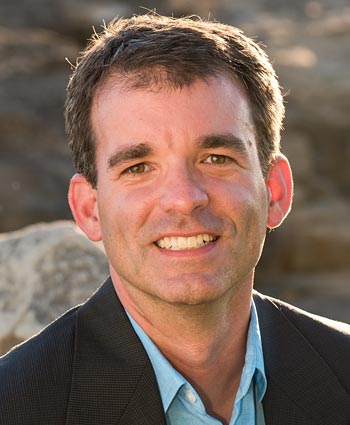Q&A with Mike Callahan: Modernizing Energy Systems

Mike Callahan is the group manager for the Applied Engineering team, a new group at NREL that supports projects in the areas of resiliency, microgrids, building systems, and new technology testing and evaluation. In his nine years at NREL, Mike’s work has taken him around the world, helping partners develop and implement energy and water security initiatives and integrating cost-effective large-scale energy storage and renewable energy projects. Mike shared some stories about his international experiences and provided insightful information on this new team at NREL.
Tell us about your background.
My interest in clean energy and systems integration developed over the years I spent studying, living, and working in the United States, South America, Europe, Africa, and on islands. After graduating from college with an engineering degree, I worked with ExxonMobil on exploration oil well drilling in five West African countries. While I learned a lot about systems engineering and program management, I also saw many challenges. I witnessed the devastation caused by the 27-year-long Angolan civil war and the impact raw materials played in the conflict. My experiences in Africa led me to shift my career focus and pursue additional educational opportunities. After leaving the oil industry, I worked in the building industry and became a LEED-certified professional and a professional engineer. I also pursued an MBA, focusing on social entrepreneurship and clean energy innovation, while starting an enterprise in Peru to help people gain access to electricity in remote communities from the Andes to the Amazon. I’m grateful for the diverse opportunities I’ve had to live and work abroad, while helping others modernize energy systems.
Where have your projects taken you while working for NREL?
For many years, I’ve been part of a team supporting the Department of the Navy’s resiliency initiatives worldwide. For the last four years, I was embedded with the Navy—first at Pearl Harbor, then at Naval Base San Diego. While working from Navy offices, I helped develop and implement energy and water projects on islands in the Pacific and installations in the Southwest United States. In October, I returned to NREL to lead the new team. I am continuing to support the Navy while also coordinating NREL efforts to help islands increase the resiliency of their systems and reduce their dependency on imported fuels. Some of the islands our NREL teams currently support include: Barbuda, Dominica, San Nicholas, and San Clemente, with four additional island locations on the horizon. Department of Defense (DOD) installations and island communities are both great partners for NREL because there are many opportunities to cost-effectively integrate and improve energy, water, microgrids, buildings, transportation, and waste systems. Further, our applied projects supporting DOD installations and island communities can result in resiliency and economic benefits for our partners, lessons that inform NREL’s research, and new pathways for a more modern, resilient, and distributed energy system.
What was the impetus for standing up the Applied Engineering group at NREL?
The Applied Engineering group was formed with a goal to help our partners apply integrated solutions to modernize our energy systems and support the development of a more secure and resilient grid. For example, our group of electrical and mechanical engineers is a great combination to provide technical support for distributed energy resources, microgrids, electric-powered transportation, and grid-interactive efficient buildings. In the past, buildings were energy loads to be served by centralized power sources, but the future is approaching quickly and that means grid-interactive technologies, community-scale microgrids, electric vehicles, water recycling, and wide-scale energy storage are all becoming integral parts to our state-of-the-art energy systems. Our group has the right skills and experience to advance the science and engineering in these areas and it’s exciting to see how our team is helping modernize energy systems with a diverse group of partners.
How does your team support NREL’s initiatives in developing effective electricity pathways?
Our team members are primarily working on applied projects and research, which aligns well with NREL’s mission and partnering model. We work around the globe supporting many diverse organizations such as the U.S. Agency for International Development, DOD, Department of Homeland Security, the National Park Service, utilities, governments, and private-sector companies. Our team is providing advanced energy and water systems technical assistance to help develop microgrids, build net-zero campuses, construct high-performance buildings and data centers, and support electric transportation systems. We are also helping to advance research efforts in NREL’s labs that stem from the work we do in the field. In some cases, our work is a key component of follow-on activities like the hardware-in-the-loop testing at NREL for utility-scale PV and energy storage microgrid, and a lab-directed research and development-funded project to visualize a microgrid in 3D to test the response of the microgrid to simulated physical and cyberattacks. Our applied work with key partners and teamwork with NREL researchers in the lab is a virtuous cycle, and it’s rewarding to see our work spur innovation and positive impact.
What are you most proud of as we wrap up 2018?
I am most proud of the people I work with. We have a wonderful team doing incredible work each and every day. Our team is translating leading-edge science and engineering concepts into real world projects on the ground that helps our partners realize economic benefits and advance energy systems integration; It’s making our country’s economy and grid stronger, diverse, and more resilient. It’s a privilege to lead and learn from this group of amazing people, and I am exciting to be on this journey with them. I look forward to an exciting year ahead.

